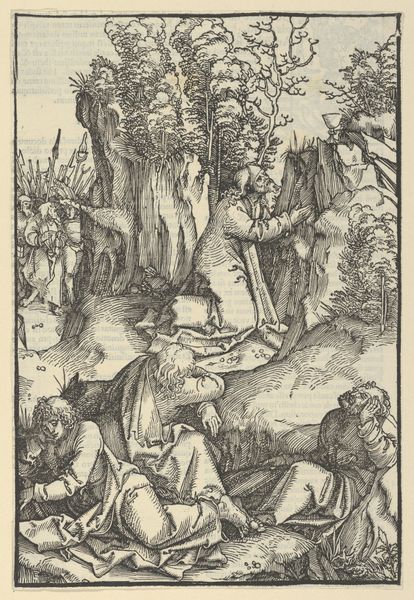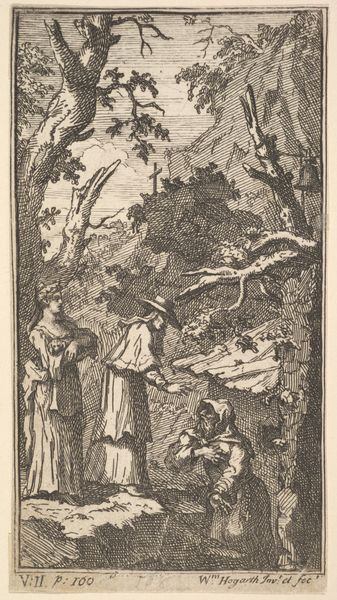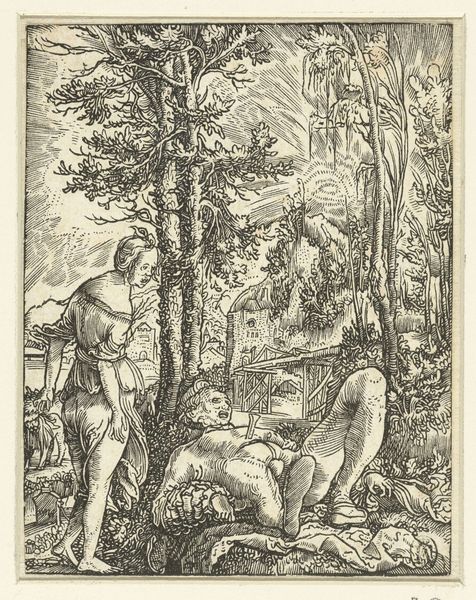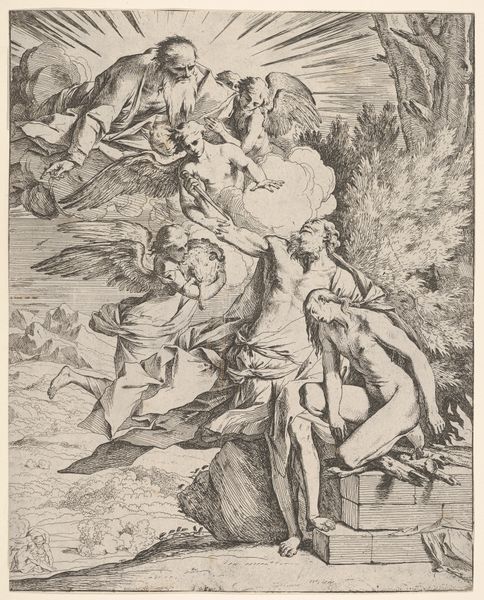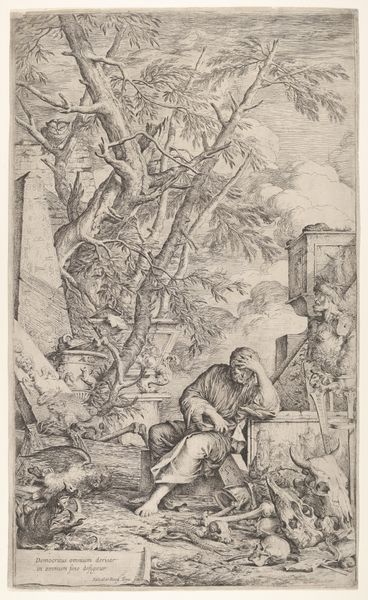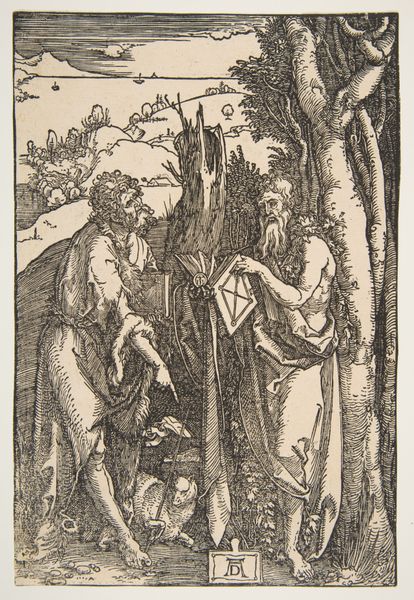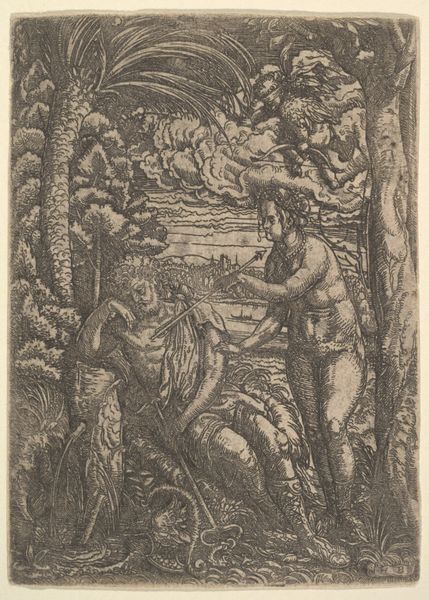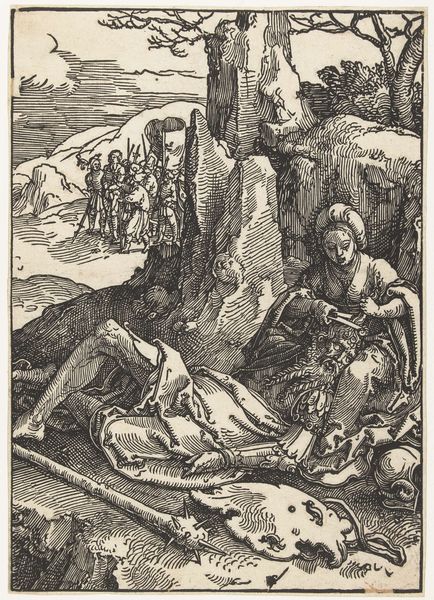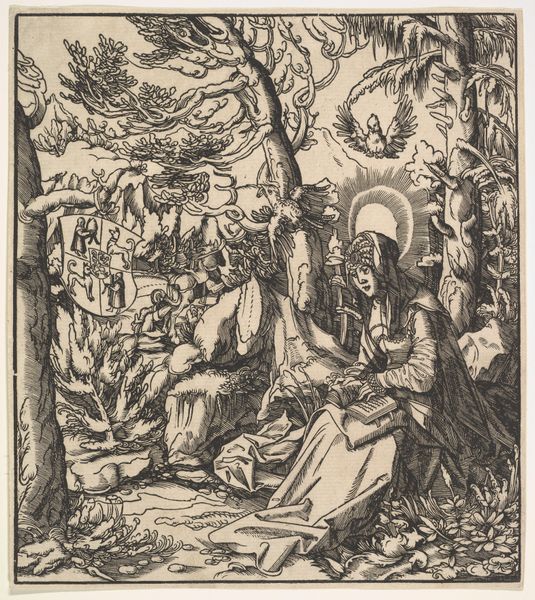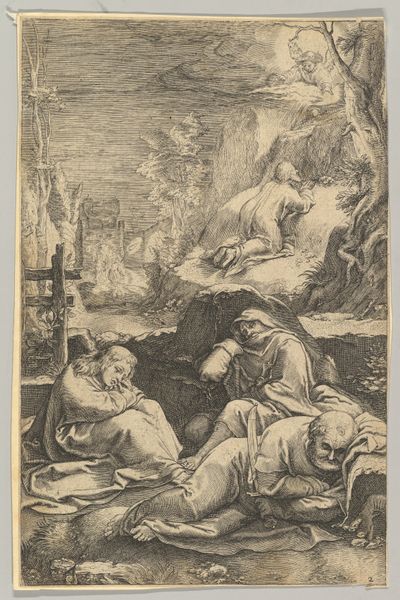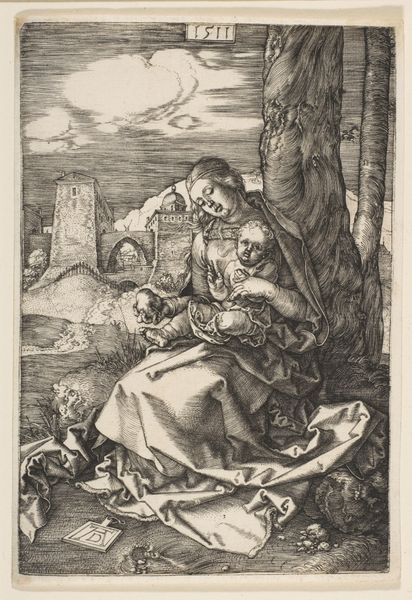
drawing, print, etching, engraving
#
drawing
#
narrative-art
#
pen drawing
# print
#
etching
#
figuration
#
history-painting
#
northern-renaissance
#
engraving
Dimensions: image: 9 9/16 x 6 3/4 in. (24.3 x 17.1 cm) sheet: 14 x 9 1/16 in. (35.6 x 23 cm)
Copyright: Public Domain
Curator: This detailed print is titled "Samson and Delilah," made between 1512 and 1522 by Lucas van Leyden. Currently, it resides at the Metropolitan Museum of Art. Editor: It’s intensely detailed; all those tiny lines! Dark and dramatic – you really feel the weight of the story bearing down. Curator: Exactly. Van Leyden was a master of engraving. Think about the labor involved in creating these prints, producing a narrative that circulates within a burgeoning market. Prints democratize art, bringing biblical tales like this to a wider audience. It shifts art's function from unique religious icons to narrative components of an increasingly networked culture. Editor: And what a narrative. I am struck by how the scene is carefully staged: Delilah shears Samson's hair, the soldiers advance in the background, and even the decorative border seems to press in on the figures. It emphasizes betrayal; it feels staged, symbolic of a loss of power and faith. Notice the contrast between Delilah's active gesture and Samson's sprawled, defenseless pose. The diagonal composition emphasizes his fallen state. Curator: Right. The positioning serves to expose the dynamic of control. The act of physically subduing Samson also entails divesting him of agency within a deeply gendered and rapidly developing social environment. Prints allowed the rise of the middle class and provided not just narrative templates but also an aesthetic standard for these rising social actors. Editor: That makes so much sense in contextualizing the popularity of this and similar pieces in that moment, the story resonates due to the masterful formal choices Van Leyden made, even at this relatively small scale. There's such concentrated emotion packed into this composition. Curator: Precisely. This artwork is indicative of shifting material conditions—and in a work that is often centered around patriarchal concepts of masculine strength, what does the turn to a market audience communicate to us regarding changes in a consumer-based art environment? Editor: It’s compelling to think about art through the lens of consumption and labor, seeing beyond the immediate visuals to broader structures of influence. It certainly highlights different points within the work itself.
Comments
No comments
Be the first to comment and join the conversation on the ultimate creative platform.
